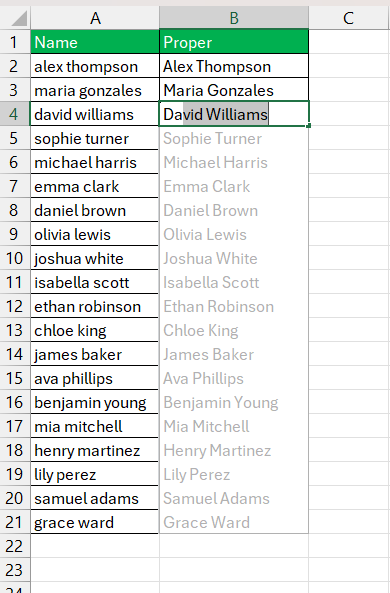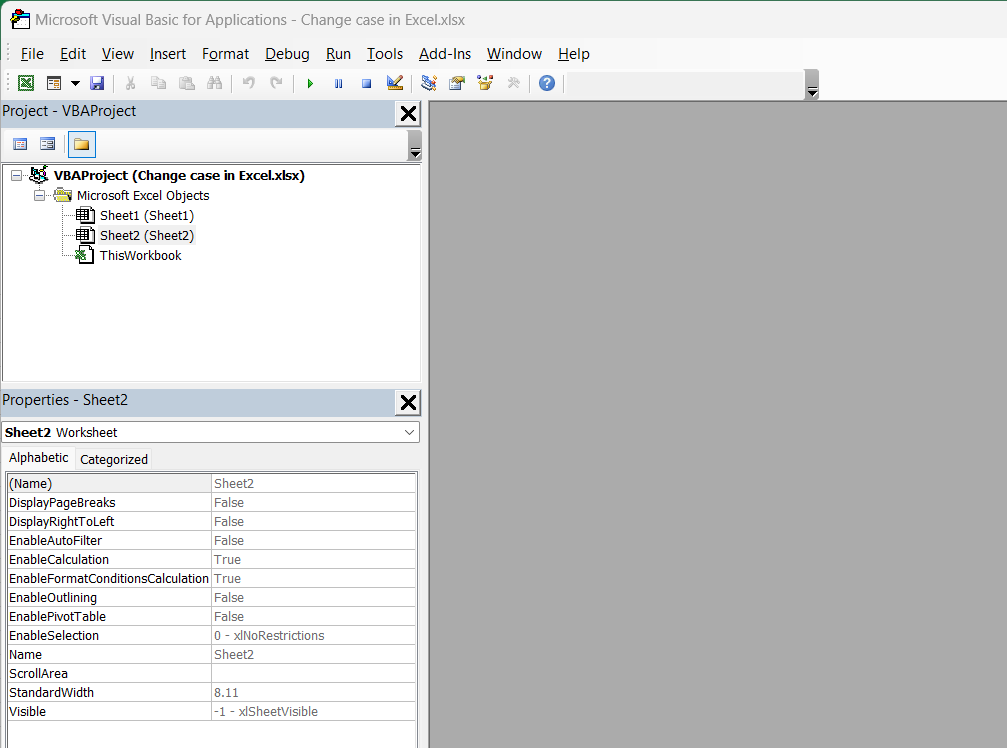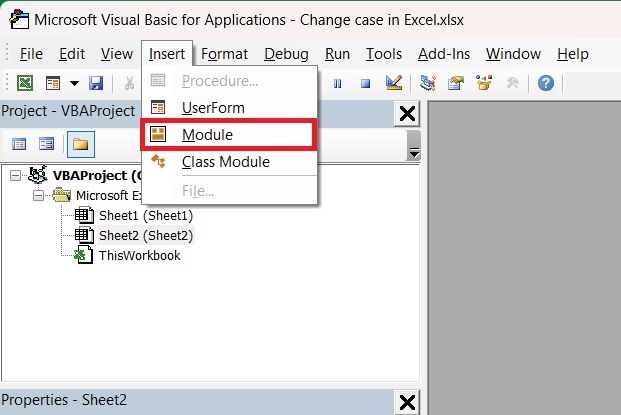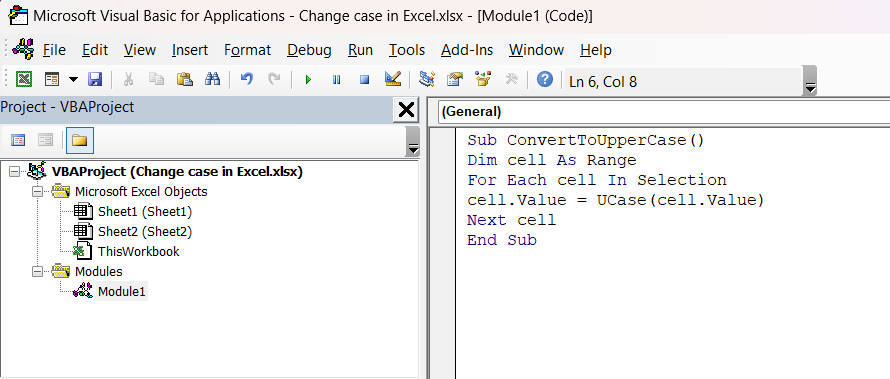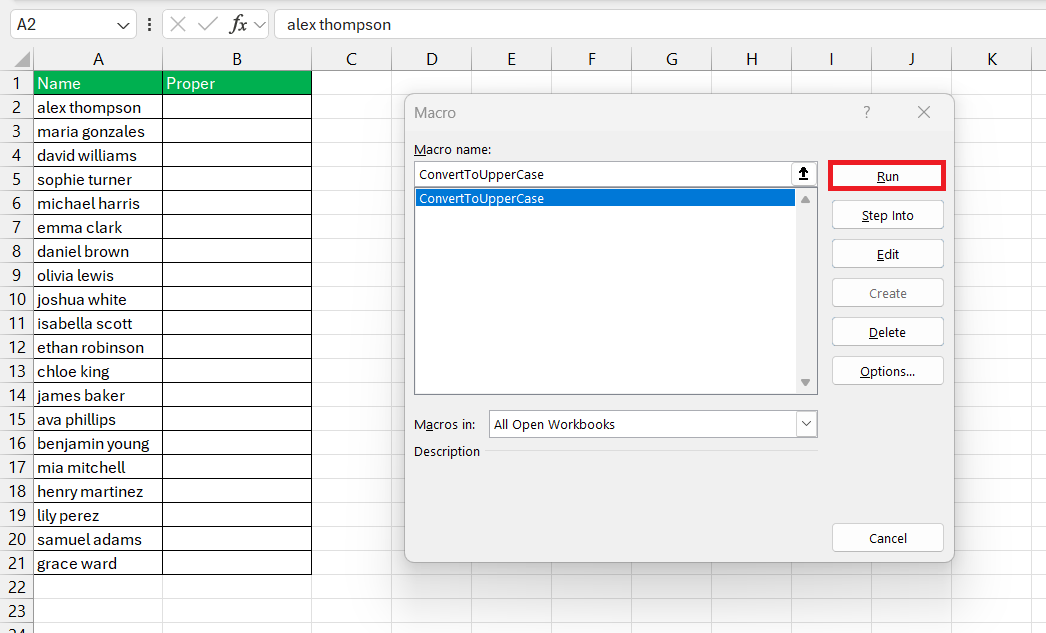Changing the case of text in Excel can greatly enhance the readability and presentation of your data. Whether I need to convert text to uppercase, lowercase, or proper case, Excel provides several built-in functions and techniques to help me achieve this. In this guide, I’ll walk you through various methods to change the case of text in Excel, ensuring your data looks polished and professional.
Key Takeaways:
- Introduction to Text Case Adjustment in Excel: Understanding the importance and methods of changing text case to enhance data presentation.
- Importance of Text Case Consistency: Ensuring uniformity in text for better readability, professional appearance, and successful data sorting and filtering.
- Common Use Cases for Changing Text Case: Standardizing imported data, preparing datasets for presentation, and formatting names and addresses for data merging.
- Initial Case Conversions Without Complex Formulas: Using Excel functions (UPPER, LOWER, PROPER) to easily transform text case.
- Advanced Case Changes with Flash Fill and VBA: Leveraging Flash Fill for quick, example-based text case changes and using VBA for complex tasks and automation.
Table of Contents
Introduction to Text Case Adjustment in Excel
The Importance of Text Case Consistency
In my journey with Excel, I’ve found that consistency is key, especially when it comes to text case. Uniformity in text ensures that my data is easily readable and professional-looking, which is essential for data analysis, reporting, and sharing my work with others. Text case consistency also aids in successful data sorting and filtering, as varying cases can cause unexpected results or even make certain functions fail.
Common Use Cases for Changing Text Case
Changing text case in Excel serves multiple practical purposes, adapting to various scenarios I might encounter. I may need to standardize data imported from different sources to ensure uniformity, or perhaps I’m preparing a dataset for presentation and require all headers in uppercase for a professional appearance.
A common scenario involves databases where names and addresses must be consistently formatted to facilitate data merging or comparison tasks. Moreover, when working with code-related data, I might need text transformation for programming-language-specific formatting.
Methods to Case Change in Excel
Method #1: Using Functions – The Elegant Transition
Excel’s built-in functions—UPPER, LOWER, and PROPER—offer an elegant way to transform text case with precision and ease. The LOWER function graciously converts text in a selected cell to all lowercase letters.
While the UPPER function does the opposite, elevating text to all uppercase.
If you’re aiming for a more refined touch, the PROPER function transforms text to title case, where the first letter of each word is capitalized.
This method doesn’t just ensure consistency; it respects the original content, only altering letter cases without modifying text structure or content.
Method #2: Change Case with Flash Fill
Flash Fill in Excel is like a magician’s trick, instantly transforming text case with a hint of example-based learning. You just need to provide a sample of how you want your data to look, and voilà, Flash Fill replicates that formatting across your dataset.
It’s incredibly useful for situations where patterns in the data are clear but employing formulas seems overwhelming. This tool can be a lifesaver for quickly converting names, addresses, or other information to your desired text case, without the need for complex formulas or macros.
Once you’ve tried Flash Fill for converting text case, you’ll understand why it’s one of Excel’s most swift and spectacular features. They don’t need to write a single formula; instead, they lead by example — typing the correctly cased text in a cell, and upon triggering Flash Fill, the rest of the data falls into alignment.
Thus, accomplishing what might have taken long tedious manual work or delicate formulas is executed almost instantly. It’s especially helpful when you’ve got inconsistent data that requires case-changing attention.
Method #3: Using VBA
For more complex tasks or automation, I can use VBA (Visual Basic for Applications) to change the case of text. Follow the steps below to use VBA to change case in Excel –
STEP 1: Press Alt + F11 to open the VBA editor.
STEP 2: Insert a new module (Insert > Module).
STEP 3: Copy and paste the above code into the module.
Sub ConvertToUpperCase() Dim cell As Range For Each cell In Selection cell.Value = UCase(cell.Value) Next cell End Sub
STEP 4: Select the range of cells we want to convert.
STEP 5: Press Alt + F8, select the macro ConvertToUpperCase, and click Run.
Changing the case of text in Excel is a straightforward task with the right tools and techniques. Whether I prefer using built-in functions, Flash Fill, or VBA, Excel provides flexible options to suit my needs. By mastering these methods, I can ensure my data is consistently formatted and easy to read.
FAQs
Can you change text case in Excel?
Yes, you can change text case in Excel. Use functions like UPPER, LOWER, and PROPER to convert text to uppercase, lowercase, or title case, respectively. Additionally, the Flash Fill feature and VBA Macros provide robust alternatives to automate the process.
What Is the Shortcut Key to Change Small Letters to Capital Letters?
There isn’t a direct shortcut key in Excel to change small letters to capital letters; however, “Shift + F3” lets you cycle through different text case options, and using Flash Fill (Ctrl + E) after typing an example in capitals does the trick.
Are there any built-in shortcuts in Excel for changing text case?
Excel doesn’t have a built-in shortcut dedicated to changing text case directly. To achieve case changes, Flash Fill (Ctrl + E) can be used after providing an example, or they might use functions or create a macro with an assigned shortcut.
Can text case be changed in Excel without using third-party tools or add-ins?
Indeed, text case can be altered in Excel without third-party tools or add-ins through functions like UPPER, LOWER, and PROPER, or with the aid of Excel’s Flash Fill feature by giving an example in the desired case and pressing ‘Ctrl + E’.
How to change case in Excel without formula?
To switch text case without formulas, utilize Flash Fill by typing one example in the desired case and then hitting Ctrl + E, or copy the data into Word, use the Change Case feature, and return it to Excel.
John Michaloudis is a former accountant and finance analyst at General Electric, a Microsoft MVP since 2020, an Amazon #1 bestselling author of 4 Microsoft Excel books and teacher of Microsoft Excel & Office over at his flagship MyExcelOnline Academy Online Course.




